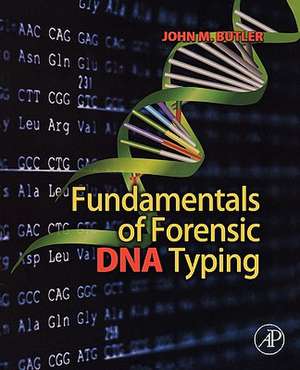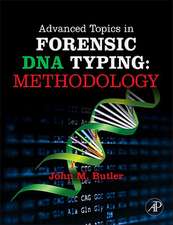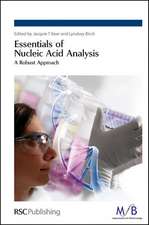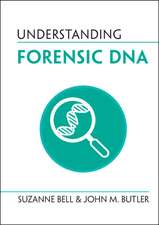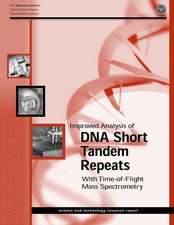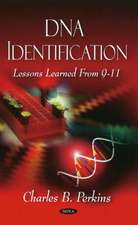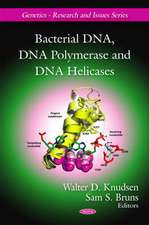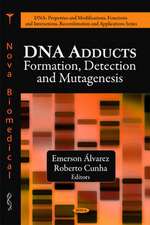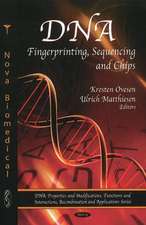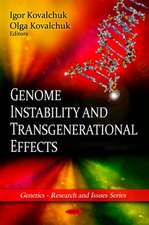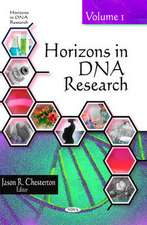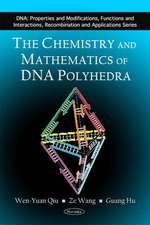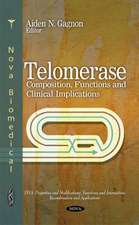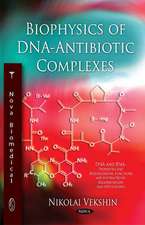Fundamentals of Forensic DNA Typing
Autor John M. Butleren Limba Engleză Paperback – 29 sep 2009
- Includes a glossary with over 400 terms for quick reference of unfamiliar terms as well as an acronym guide to decipher the DNA dialect
- Continues in the style of Forensic DNA Typing, 2e, with high-profile cases addressed in D.N.A.Boxes-- "Data, Notes & Applications" sections throughout
- Ancillaries include: instructor manual Web site, with tailored set of 1000+ PowerPoint slides (including figures), links to online training websites and a test bank with key
Preț: 330.34 lei
Nou
Puncte Express: 496
Preț estimativ în valută:
63.21€ • 66.17$ • 52.30£
63.21€ • 66.17$ • 52.30£
Carte disponibilă
Livrare economică 15-29 martie
Livrare express 01-07 martie pentru 54.50 lei
Preluare comenzi: 021 569.72.76
Specificații
ISBN-13: 9780123749994
ISBN-10: 0123749999
Pagini: 520
Ilustrații: 1
Dimensiuni: 191 x 235 x 28 mm
Greutate: 0.89 kg
Editura: Elsevier
ISBN-10: 0123749999
Pagini: 520
Ilustrații: 1
Dimensiuni: 191 x 235 x 28 mm
Greutate: 0.89 kg
Editura: Elsevier
Public țintă
Undergraduate forensic science students, lawyers who need enough cursory information to understand and speak to jury, law enforcement, crime scene investigators, legal professionals and government/legal policy makersCuprins
Foreword
Introduction
Acknowledgments
About the author
1 Overview and History of DNA Typing
2 Basics of DNA Biology and Genetics
3 Historical Methods
4 Sample Collection, Storage and Characterization
5 DNA Extraction
6 DNA Quantitation
7 DNA Amplification (The Polymerase Chain Reaction)
8 Short Tandem Repeat Markers
9 Fundamentals of DNA separation and Detection
10 STR Genotyping and Data Interpretation
11 Statistical Interpretation: Evaluating the Strength of Forensic DNA Evidence
12 DNA databases
13 Quality Assurance
14 Forensic Challenges: Degraded DNA, Mixtures, and LCN
15 Additional Loci and Non-Human DNA Testing
16 Lineage Markers: Y Chromosome and mtDNA Testing
17 Applications of DNA Typing
18 Future Trends
Appendix
1 Glossary of Terms
2 Useful Websites
3 Probability and Statistics
Introduction
Acknowledgments
About the author
1 Overview and History of DNA Typing
2 Basics of DNA Biology and Genetics
3 Historical Methods
4 Sample Collection, Storage and Characterization
5 DNA Extraction
6 DNA Quantitation
7 DNA Amplification (The Polymerase Chain Reaction)
8 Short Tandem Repeat Markers
9 Fundamentals of DNA separation and Detection
10 STR Genotyping and Data Interpretation
11 Statistical Interpretation: Evaluating the Strength of Forensic DNA Evidence
12 DNA databases
13 Quality Assurance
14 Forensic Challenges: Degraded DNA, Mixtures, and LCN
15 Additional Loci and Non-Human DNA Testing
16 Lineage Markers: Y Chromosome and mtDNA Testing
17 Applications of DNA Typing
18 Future Trends
Appendix
1 Glossary of Terms
2 Useful Websites
3 Probability and Statistics
Recenzii
"There is perhaps no individual better suited to author a foundational survey of forensic DNA typing than John Butler. As with past editions, Butler’s knowledge, along with his organizational and communication skills make Fundamentals of Forensic DNA Typing a must read for students, forensic practitioners and trial attorneys. This text provides the reader with insightful and understandable explanations necessary to comprehend the underpinnings of forensic DNA analysis. It continues in the tradition of its predecessors as the premier textbook on the forensic DNA subject."
-- Richard Saferstein, Ph.D. Author and Forensic Science Consultant
"When ScienceWatch.com, a Thomson Reuters web resource for measuring and analyzing science trends, recently listed the most influential institutions and researchers in forensic science based on journal citations, the National Institute of Standards and Technology (NIST) and one of its researchers, John Butler, were among the leaders."
-- ThomasNet.com
"Intended as the companion to the 2010 publication, Fundamentals of Forensic DNA Typing, this title contains 18 chapters with four appendices providing up-to-date coverage of essential topics in the field of DNA analysis. The book includes new information on DNA databases, low-level DNA, and validation; a comprehensive listing of alleles for the 23 STR loci present in commercial kits, and coverage of familial searching."
--Evidence Technology Magazine, July-August 2012, page 4
-- Richard Saferstein, Ph.D. Author and Forensic Science Consultant
"When ScienceWatch.com, a Thomson Reuters web resource for measuring and analyzing science trends, recently listed the most influential institutions and researchers in forensic science based on journal citations, the National Institute of Standards and Technology (NIST) and one of its researchers, John Butler, were among the leaders."
-- ThomasNet.com
"Intended as the companion to the 2010 publication, Fundamentals of Forensic DNA Typing, this title contains 18 chapters with four appendices providing up-to-date coverage of essential topics in the field of DNA analysis. The book includes new information on DNA databases, low-level DNA, and validation; a comprehensive listing of alleles for the 23 STR loci present in commercial kits, and coverage of familial searching."
--Evidence Technology Magazine, July-August 2012, page 4
